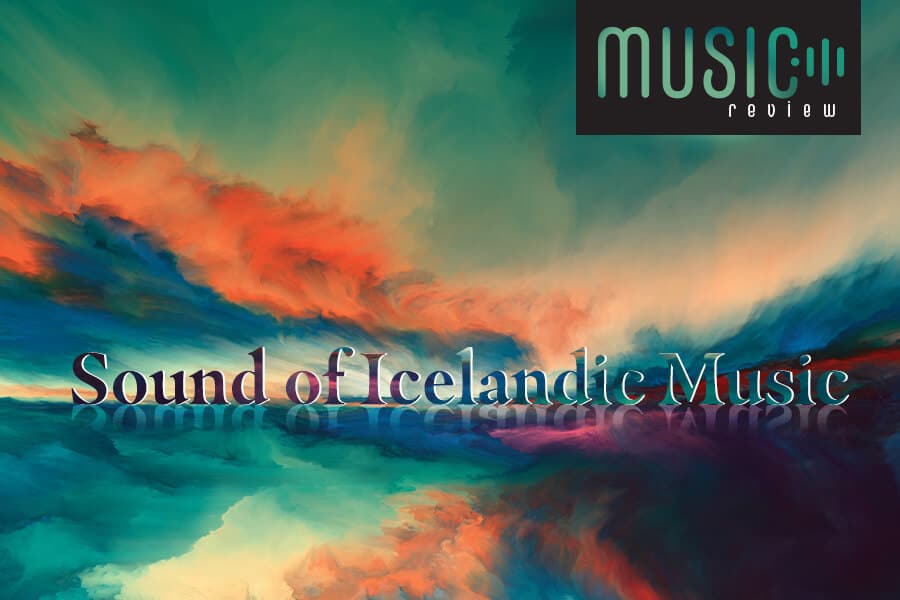The Icelandic region is a prosperous part of the world to say the least. Its seclusion from the rest of the world, has developed a monumental musical sound that influences much of the global music world today! The land has managed to create a unique music texture that has created the area's international identity. Through historical musical waves traced back to the 14th century to the impactful pop musical sensation Bjork, Iceland is the land of music!
The Music on Iceland
I have always wanted to travel to the land of Iceland. Okay, that may sound a bit cheesy, however it’s true! I admired the culture, language, customs, and traditions as I embarked on my first European trip in 2013.
As I visited my friend Bella in Norway, I could faintly remember the heavy desire to travel to the national region, that has offspring of many pop artists in today’s modern society.
Sad to say, I have not landed on the soil just yet, however, I am hopeful for my Icelandic future.
Through my travels, I have heard many things about Iceland and met a few Icelandic individuals throughout my studies. Their sweet gentle nature cloaked in passion, ambition and strong determination shines bright through their hard-working background.
As many other articles, the question I would ponder throughout the night as I eagerly begin researching the area of the topic, is if traditional folk sounds make a strong appearance in modern music scenes.
However, that question did not hit my cranium in a car crash fashion when thinking of the Icelandic region. It is easily noticeable that the music of Iceland and its historical roots remain a prevalent ear embracing sound that spans throughout time.
The question I am left wondering is, is if people around the world managed to understand the national sound easily identifiable to the listening artist away from the icy region?
Love, Winters, and Masculinity
With songs dated back to the 14th century, the music of Iceland is seeped into the fabric of long tradition. Folk songs of Iceland are generally surrounding the topic of love, hard winters and masculinity in nature.
However, mystical songs through fantasy surrounding elves and trolls are prominent figures in the traditional sound. The early music was accompanied by authentic instruments such as the drone zither “Langspil” and the Icelandic fiddle “Fiola”.
These instruments would be paired with traditional “Vikivaki” (chain dances) and would be a focal point of the early church environment and Christmas season.
With Iceland’s notion of isolation, meant that foreign influences were completely absent until the 18th century.
And through this effect, the sounds of Iceland have created their own sound and eclectic taste in music over generations.
Famously written by poet Hannes Bjarnason, “Rimurs” are epic tales sung in rhythmic ballads, usually in acapella.
With Viking Age Eddic poetry heavily influencing the vocal art, complex metaphors mixing with creative form, spark the traditional folk music.
“Rimurs” along with European polka, waltz and reel arrived on the music scene in the 18th century. Protestantism is an important part of Icelandic music.
Although “Rimurs” were banned by the church, many priests were an influential statement piece of the vocal music.
And through this notion, the Icelandic music began to evolve while maintaining a persistent hand in traditional sound. Classical music came rather later to the Icelandic region.
Emerging from the late 19th and the early 20th century, composer “Sveinbjorn Sveinbjornsson” was considered to be the first classical artist for the land of Iceland.
His classical contributions developed the national anthem along with proud influential entities in today’s national classical music.
Similar to Nordic music forms with strong pop traditions melted together with vibrant folk music, the Icelandic sound expands into a variety of genres and styles. Artists of an alternative rock influence include “Bjork”, “The Sugababes” and the electronic group “GusGus”.
“Bjork” is a global sensation that has paved the way for experimental pop music. Receiving 13 Grammy nominations, a gold platinum record in the United States, along with selling 15 million albums worldwide, the singer has captivated audiences around all throughout the world.
Throughout the years, the Icelandic region has molded their pop sounds into many differentiations of pop rock and indie music and have become a recognizable area for all things metal and hardcore musical interpretation.
“Of Monsters and Men” is an indie folk-rock band that hails from the Icelandic waters. The band has also created worldwide fame through their debut album “My Head is an Animal” released September 2011.
Iceland is home to many music festivals that create an international space of pure musical endeavors.
Through large festivals centered around the Icelandic scene, the alternative and metal scene makes a prominent mark on global music.
The 1999 metal Icelandic band, “Solstafir” created a huge splash on the metal scene with traditional influence. The band has performed through many global avenues.
The techno scene has been based through the actions of techno house group “GusGus”. Releasing nine studio albums, the band increasingly makes monumental steps into the electronic world through historical sounds of Icelandic culture.
Additionally, elements of a classical sound of musical cleans characterize the experimental music of the region. Ben Frost, based in Reykjavik, creates an authentic wave in the world of indie music.
These artists are just a mere glimpse of the Icelandic musical influence on a global scale. Iceland has managed to cultivate all aspects of music throughout a widespread genre.
The national influence of global music and the music industry today is apparent through many outlooks of musical life.
Iceland has developed an authentic national sound that is recognizable from many walks of life.
There is a strength in terms of musical interpretation when areas of the world can have an identifiable tone and musical atmosphere.
Iceland will remain a staple of musical authenticity and forward musical thinking.
Photo: Shuttestock / Photomontage: Martina Advaney
Read more music reviews here:
Music Speaks Louder Than Words with the Croatian Sounds of Svemirko
Support us!
All your donations will be used to pay the magazine’s journalists and to support the ongoing costs of maintaining the site.
Share this post
Interested in co-operating with us?
We are open to co-operation from writers and businesses alike. You can reach us on our email at [email protected]/[email protected] and we will get back to you as quick as we can.










